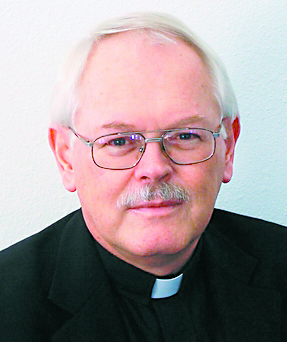IN EXILE
By Father Ron Rolheiser, OMI
One of Dorothy Day’s favorite saints was Therese of Lisieux, Therese Martin, the saint we call “the Little Flower.” At first glance, this might look like a strange affinity. Dorothy Day was the ultimate activist for justice, protesting in the streets, being arrested, going to prison, and starting a community and a newspaper, the Catholic Worker, in service of the poor. Therese of Lisieux was a contemplative nun, hidden away in an obscure convent in a small town in France. Indeed, during her whole life, except for one brief trip to visit to Rome with her family and parish, she never left her small town and, at her death, was probably known by fewer than two hundred people. Moreover, in her writings, one finds precious little that might be considered explicitly prophetic in terms of social justice. She wrote as a mystic, with a focus on the interior life and on our personal intimacy with Jesus. Not exactly the stuff of protests in the streets. So why did Dorothy Day, whose life looks so different, have an affinity for this young recluse?
Dorothy Day was drawn to Therese’s spirituality because she understood it beyond its popular misconception. Among all known saints, Therese of Lisieux stands out as one of the most popular saints of all time and as one of the most misunderstood saints of all time, and her popularity is part of the problem. Popular devotion has encrusted her person and spirituality in an over-simplistic piety that generally serves to hide her real depth. Therese termed her spirituality “the little way.” Popular piety, for the most part, thinks of her “little way” as a spirituality that invites us to live quiet, humble, simple, anonymous lives wherein we do everything, especially the small humble tasks asked of us, with fidelity and graciousness, unassuming, childlike, grateful to God just to be of service. While there is a lot of truth in that understanding, it misses some of the depth of Therese’s person and spirituality.

To understand Therese’s “little way” and its connection with justice for the poor, we need to understand certain things in her life that helped constellate the vision that lay behind her “little way.”
Therese of Lisieux had a very complex childhood. On the one hand, her life was touched by deep sadness, not least the death of her mother when Therese was four years old and several bouts of clinical depression from which she nearly died. She did not have an easy walk through childhood. On the other hand, she had an exceptionally graced childhood. She grew up in family of saints who loved her deeply and honored (and often photographed) her every joy and pain. She was also a beautiful young girl, attractive and graced with a disarming warmth and sensitivity. Her family and everyone around her considered her special and precious. She was much loved; but this did not make for a spoiled child. We can never be spoiled by being loved too much, only by being loved badly. Her family loved her purely, and the result was a young woman who opened her heart and person to the world in an exceptional way.
Moreover, as she matured, she began to notice something. She noticed how when she was a child her every tear was noticed, valued, and honored, but that this was not the case for many other people. She recognized that countless people suffer heartbreaks and injustices, endure abuse, are humiliated, live in shame, and shed tears that no one notices and no one cares about. Their pain is not seen, not honored, not valued. From this insight, she articulated this ground metaphor that undergirds her “little way.”
Her words: One Sunday, looking at a picture of Our Lord on the Cross, I was struck by the blood flowing from one of his divine hands. I felt a pang of great sorrow when thinking this blood was falling on the ground without anyone’s hastening to gather it up. I was resolved to remain in spirit at the foot of the Cross and to receive its dew. … I don’t want this precious blood to be lost. I shall spend my life gathering it up for the good of souls.
From this, we see that her “little way” is not about privatized piety, but about noticing and responding to the pain and tears of our world. Metaphorically, it is about noticing and “gathering up” the blood that is dripping from the suffering face of Christ which this face is presently suffering in our world in the faces of the poor, the faces of those who are bleeding and shedding tears because of heartbreak, injustice, poverty, lack of love, and lack of being deemed precious.
Dorothy Day walked the streets of the poor, noticing their blood, drying their tears, trying in her own way to gather them up. Therese did the same thing mystically, deep inside the body of Christ. It is no surprise that Dorothy Day took her as her patron saint.
(Oblate Father Ron Rolheiser is a theologian, teacher and award-winning author. He can be contacted through his website www.ronrolheiser.com.)
